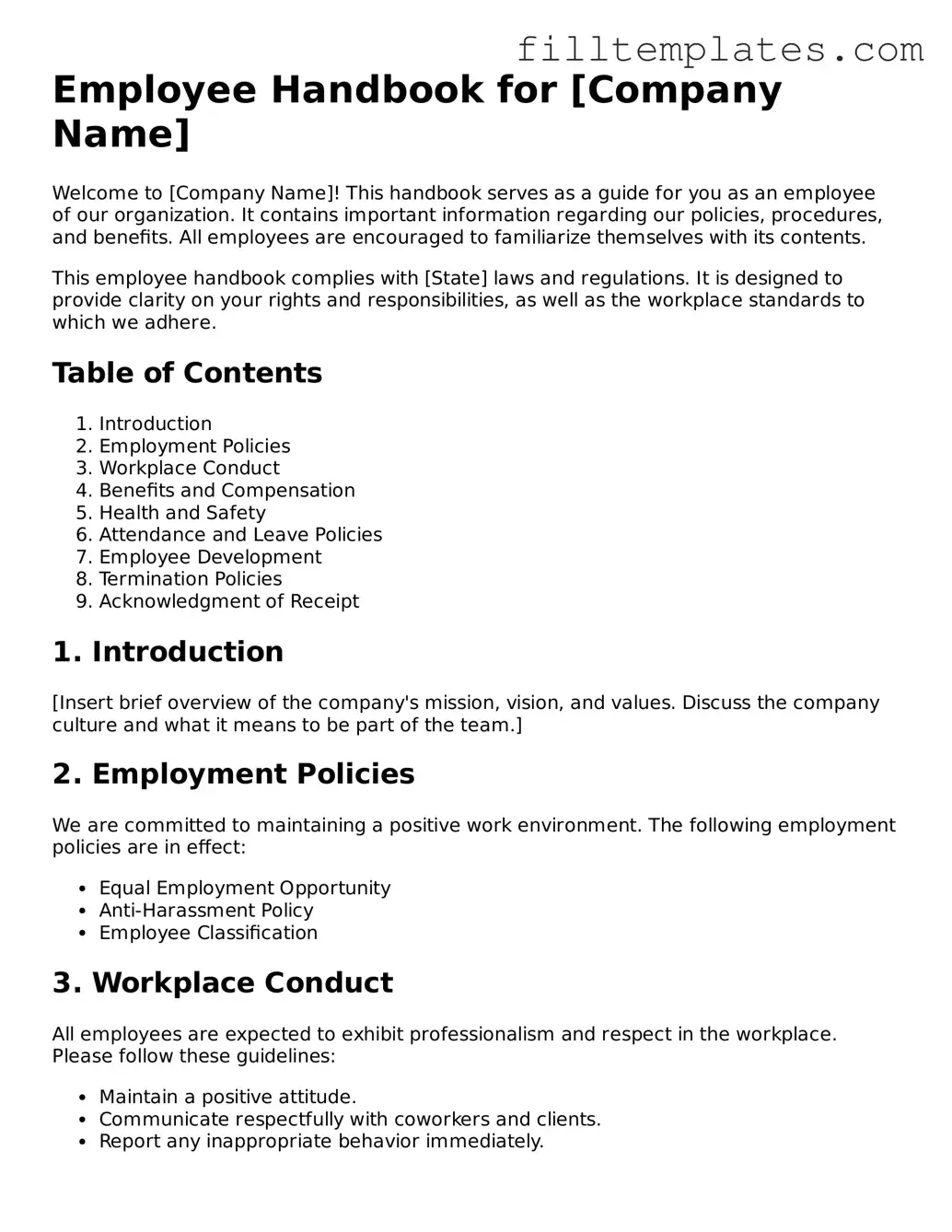Employee Handbook for [Company Name]
Welcome to [Company Name]! This handbook serves as a guide for you as an employee of our organization. It contains important information regarding our policies, procedures, and benefits. All employees are encouraged to familiarize themselves with its contents.
This employee handbook complies with [State] laws and regulations. It is designed to provide clarity on your rights and responsibilities, as well as the workplace standards to which we adhere.
Table of Contents
- Introduction
- Employment Policies
- Workplace Conduct
- Benefits and Compensation
- Health and Safety
- Attendance and Leave Policies
- Employee Development
- Termination Policies
- Acknowledgment of Receipt
1. Introduction
[Insert brief overview of the company's mission, vision, and values. Discuss the company culture and what it means to be part of the team.]
2. Employment Policies
We are committed to maintaining a positive work environment. The following employment policies are in effect:
- Equal Employment Opportunity
- Anti-Harassment Policy
- Employee Classification
3. Workplace Conduct
All employees are expected to exhibit professionalism and respect in the workplace. Please follow these guidelines:
- Maintain a positive attitude.
- Communicate respectfully with coworkers and clients.
- Report any inappropriate behavior immediately.
4. Benefits and Compensation
As part of our commitment to employee well-being, we offer a range of benefits:
- Health Insurance
- Retirement Plans
- Paid Time Off
5. Health and Safety
Ensuring a safe workplace is a shared responsibility. We comply with all federal and state health and safety regulations. Employees should:
- Report unsafe conditions.
- Participate in safety training sessions.
- Follow emergency protocols.
6. Attendance and Leave Policies
Punctuality is critical to our success. Please adhere to the following attendance policies:
- Notify your supervisor as soon as possible in the event of an absence.
- Provide documentation for extended leave when applicable.
- Understand the company's policy on leave types, including sick leave and vacation time.
7. Employee Development
Career growth is essential. We offer various resources for your professional development, including:
- Training programs.
- Mentorship opportunities.
- Tuition reimbursement for applicable courses.
8. Termination Policies
Understanding the conditions of employment termination is crucial. This includes:
- Grounds for termination.
- The exit interview process.
- Final paycheck procedures.
9. Acknowledgment of Receipt
By signing below, you acknowledge that you have received, read, and understood the Employee Handbook for [Company Name].
Employee Name: _________________________
Signature: _______________________________ Date: ___________________
Thank you for being a valued member of our team. Together, we can create a positive and productive workplace.
